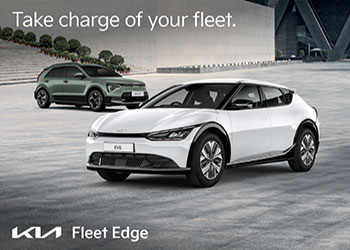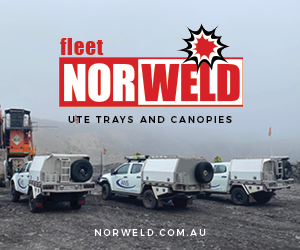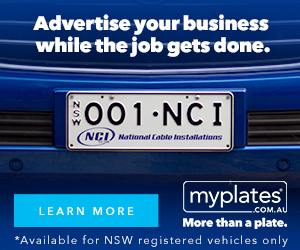Future Vehicles Conference revealed emerging issues playing on the minds of Australia’s automotive industry heavyweights and hard thinkers as vehicle autonomy comes hither.
WORDS SCOTT MURRAY PHOTOS SUPPLIED
As the automotive industry reels from the first official fatality as a result of Tesla’s fallible AutoPilot partial-autonomy vehicle wizardry in recent months, the time is right to address how automated mobility will work Down Under, and safely.
AFMA was at the Future Vehicles Australia Conference in May as industry figures declared their concerns, offered their expert advice and highlighted the most important topics and perspectives Australia needs to address now and in future. Especially as carmakers develop and consumers welcome this innovative and potentially benefitting technology to our shores.
Hailed as the inventor of the computer, Alan Turing – referred to by Artificial Intelligence Expert Toby Walsh from University of NSW – once said of autonomous systems as needing to be identified as being so. Walsh’s studies in this field discuss Turing’s incredible forward-thinking on science and computers as writing the lore on early AI.
“We are in a transition period, which is the most dangerous time,” he said. “This is one of the most significant shifts in transport history. Just as we left the horse for steam-powered locomotive and eventually internal combustion, we are about to step into the unknown. But currently there is no legislation about distinguishing autonomous vehicles.” He says policy makers need to get drafting on some of the most important pieces of legislation in our history, and that it needs to be precise, wide in scope and accurate. But ultimately, it needs to start today.

Kevin McCann, Volvo Car MD
Kevin McCann, Volvo Car Australia MD, was confident of the Swedish carmaker’s ability to take the lead in developing not only the technology needed to make AVs a reality, but leading by example in reaffirming the company’s responsibility and dedication toward safety in the process.
“Volvo will take responsibility for any accidents in an autonomous driving environment,” he said in his keynote speech, “because ultimately we want no person to be killed or seriously injured in a new Volvo by 2020. That’s our vision and we want to meet that obligation.”
“We’re in the prototype stage right now, preparing for the Gothenburg test in 2017 where we’ll trial autonomous technology in real-world environments,” he said. “In London and China we’re also planning on taking up to 100 Volvo vehicles to the streets to trial.”
But even one of the world’s biggest prestige carmakers like Volvo admits it cannot develop cars for the future without regulatory and government support. In particular, when it comes to the issue of information ownership, sharing and analysis, McCann says other parties need to get involved.
“But these ventures need collaboration on infrastructure, safety and economic levels. We’re in the process of designing cars to be autonomous – it’s a knowledge-driven process of real-life safety which Volvo has been in the business of since it began,” he said. “The issue we’re forecasting is around data sharing. It’s going to be important to iron out these creases because data ownership and data exchange issues could literally halt progress.”
As Volvo Car pushes the innovation and technology envelope in order to keep people safe, McCann was quite passionate and confident about the forward-thinking design and engineering initiatives already working their way into late-model vehicles now. But he urged our governments and peak bodies to not be complacent and continue the push for evolution and action on the policy front.
“We have a number of safety systems like Rear Collision Warning, Intersection Support Braking, Speed Limitation from road signs, Run Off-Road Protection, Road Edge & Barrier Detection, Large Animal Detection just coming to market now or in the next few years which will be yet another step toward absolute safety in a Volvo in the autonomous vehicle future. We would like to see continued regulatory action in Australia to allow innovation and progress to continue.”

Above: AVs must cope in complex environments

ANCAP CEO James Goodwin
Helping the innovation and safety process are a number of independent bodies pushing for improvement and ensuring only the safest vehicles make it onto our roads in the future. Australasian New Car Assessment Program (ANCAP) CEO James Goodwin made this point very clear.
“Australia has an average registered vehicle age of 10.1 years, when ABS and SRS airbags weren’t standard safety features in motor vehicles. Now, they’re mandatory equipment, so we’ve come a long way,” he said. “We’re constantly moving the goalposts and this will accelerate over coming years as we transition our crash testing and assessment protocols to align with EuroNCAP. This will require vehicles to be offered with Auto-Emergency Braking (AEB) in order to achieve a five-star ANCAP rating from 2018 onward.”
Goodwin posed the question about how we can make the market move faster to keep up with the pace of change. Do we leave it to the marketplace to roll out autonomous vehicle safety equipment or does the system require regulation
“Both,” he said. “In 2015, of the 100 top-selling vehicles in Australia, that’s 800,000 newly registered vehicles, only 4% were sold with AEB as a standard feature. We also have the Luxury Car Tax stifling innovation, making it harder for safety assist technology to make it into the new car market. Putting a tax on safety is not the right culture to impose on consumers.”
Newly-released data from the Bureau of Infrastructure, Transport and Regional Economics shows June 2016 YTD figures are on a five-year high and the time to act is now. ANCAP, in a joint statement has appealed to Prime Minister Turnbull to elect a national Road Safety Minister. “We don’t want a mixed fleet of autonomous and semi-autonomous vehicles because the risk of accidents increases. Higher consumer acceptance will reduce the transition time and that’s why we encourage manufacturers to put the safest vehicles possible into the market now, so people have time to adapt and learn how safety assist technology works.”
Michael Regan, Human Factors expert from the Australian Road Research Board (ARRB), says the way to consumer acceptance is through trust. He broke down the different aspects and perceptions of vehicle autonomy in order to address the complexity of the issue.
“Driving is a complex activity and there are three factors to the equation,” he said. “First is understanding the reason for automation. Driving is a dangerous task which is sometimes impossible to perform flawlessly. Sometimes we have difficulty, and automation has the ability to extend human capabilities. Ultimately, we automate simply because we can, to support our activities.”
The second factor Regan adds to issues of trusting autonomous vehicles is knowing why humans would be distrusting.
“Distrust happens when humans fail to trust the automation, taking back control of the vehicle when unnecessary. This could compromise safety,” he said. “The final factor is over-trusting autonomous vehicles. This occurs when we get complacent, we allow experience to guide our expectancies and can fail to monitor the environment – essentially we take ourselves ‘out of the loop’. These components are a major factor in aviation – what happens when the AV isn’t doing what it should be?”
Regan also discussed the issue of skill loss, again poignant with airline pilots who only switch planes into ‘manual’ from autopilot in order to keep their skillset in case of emergency.
“We risk a loss of confidence and competency as our abilities degrade, leaving us vulnerable in case of emergency,” he said. “The dynamic then changes to education and training, namely, teaching how to take back control in unforeseen circumstances. We also need to look at factors like “mode confusion”, a bit like choosing the correct wash cycle on your brand new washing machine. Lastly, there’s simple driver acceptance – because not everyone wants to stop driving their cars.”

Above: Courtesy Volvo Car Australia

Above: Ford Fusion autonomy R&D
For a more regulatory perspective on the issue, Stuart Ballingall from Austroads provided a third dimension to the conference, speaking in particular about registration and licensing. He summarised that an operational framework also needs to include vehicle registration, owner/driver licensing, maintenance, infrastructure and signage, plus road operations.
“We need to think this through. If a Tesla updates a Model S to the point it has machine learning, there’s no regulation for that,” he said. “We’re looking at a shift in ownership here. Do we pay registration for varying levels of automation, and will this mean registration for a new class or type of vehicle? Also, how will we generate revenue to pay for services and maintenance as we have now?”
Ballingall questioned the necessity for licensing and whether we will still need one to ‘drive’ a vehicle if it is autonomous. “Would we need to align our license with the class of vehicle, and how would we be tested for our license to operate an autonomous vehicle?”
He summarised that Original Equipment Manufacturers (OEMs) may evolve into software production, because ultimately data, security, sensor technology will become essential. “Software will become more important than chassis and doors,” he said. “Basically cars now are still as they were with the Model T Ford. This is a chance to start with a new sheet of paper and change the industry completely.”
There was an international presence at Future Vehicles, with TNO automotive research organisation’s Bastiaan Krosse trekking all the way from The Netherlands to speak on the issues of autonomy and platooning in Europe.
Of particular interest was the issue of informatisation of traffic – basically, the harmonising of vehicles on the road – and the dichotomy of being reactive versus proactive when it comes to approaching vehicle automation.

Above: Tesla AutoPilot graphic
It was at a local and regulatory level however where Paul Retter, National Transport Commission CEO, presented the case for learning from history. After British poet and writer Mark Twain visited Australia in the late 1800s and subsequently published his book Following the Equator in 1897, he wrote of the ineptitude of Victorian and New South Welshman engineering and design. Reaching the border of NSW and Victoria in the freezing of nights via locomotive, passengers, including Twain himself, were required to disembark and alight again onto a Victorian train because of the differing track gauges. “Think of the paralysis of intellect that gave that idea birth,” he is famously quoted in Retter’s presentation, appropriate given the potential for inconsistencies and insufficient forward planning as the autonomous transport frontier draws closer.
One primary issue dogging the National Transport Commission right now is defining control of AVs.
“Our stakeholders have told us that resolving the issue of who, or what, is in control of an automated vehicle,” said Paul of the seemingly inevitable mixed-fleet transition. “This relates primarily to vehicles that have conditional automation, where human drivers will still have responsibility to monitor the vehicle’s driving system and to intervene if something goes wrong.”
In the chicken-and-the-egg scenario of technology arriving before regulation, but regulation needing real-world application to be concise and accurate, Retter says reform needs to be felicitous.
“Any regulatory reforms must be carefully timed,” he said. “On the one hand, we do not want to introduce laws too soon before the technology matures as it might isolate Australia from global vehicle markets. On the other hand, we do not want to leave regulatory reform too late as that might result in delaying the deployment of this new technology.”
So where is Australia at this point? Somewhere in the middle, according to Retter.
“Some regulations are sufficiently flexible and robust to adapt to automated driving technology, such as our liability and privacy framework,” he believes. “Other more prescriptive laws, such as the use of the term ‘driver’ in the Road Rules, are likely to require further reforms to ensure that they can accommodate automated vehicles.”
As for drawing on the practical and logical commentary Mr. Twain offered our sunburnt country 120 years ago, we look promising when it comes to avoiding mistakes of the past. “Our key objectives are national and international consistency. What the national and international consistency looks like will require further consideration,” Paul said optimistically. “We continue to work on this issue in close consultation with industry and community groups, all levels of government in Australia, as well as key stakeholders from overseas.”
While it may not be front page news or trending on Twitter, the autonomous vehicle evolution is coming. Figureheads from virtually every facet of the automotive industry, even branches of government and other affiliated industries, are all watching this space. One big question remaining is whether Australia will choose to lead from the front, or patiently bide its time and get it right the first time. Ergo, it seems in the meantime we need to focus on basic definition and recognition of autonomous vehicles.













